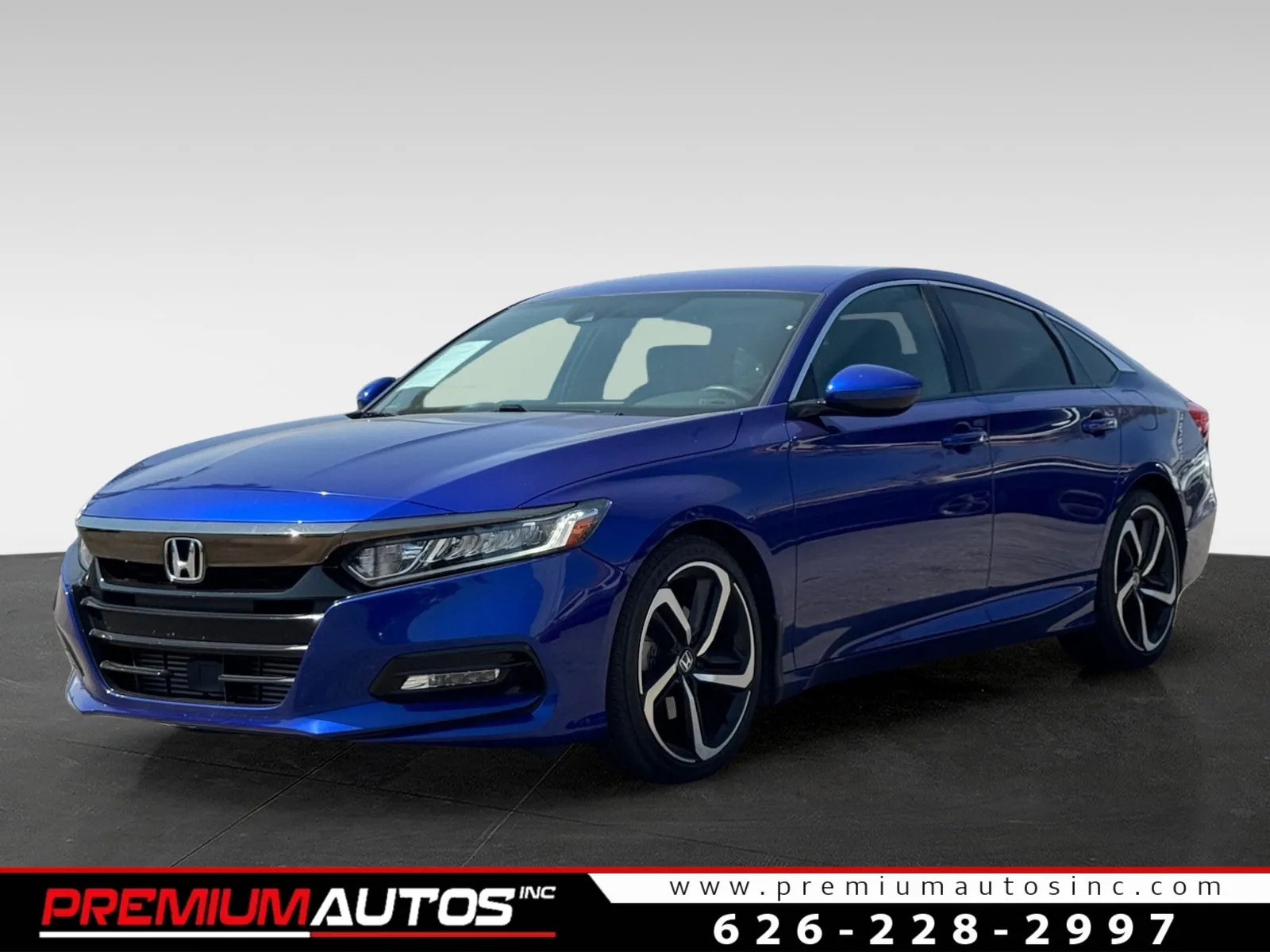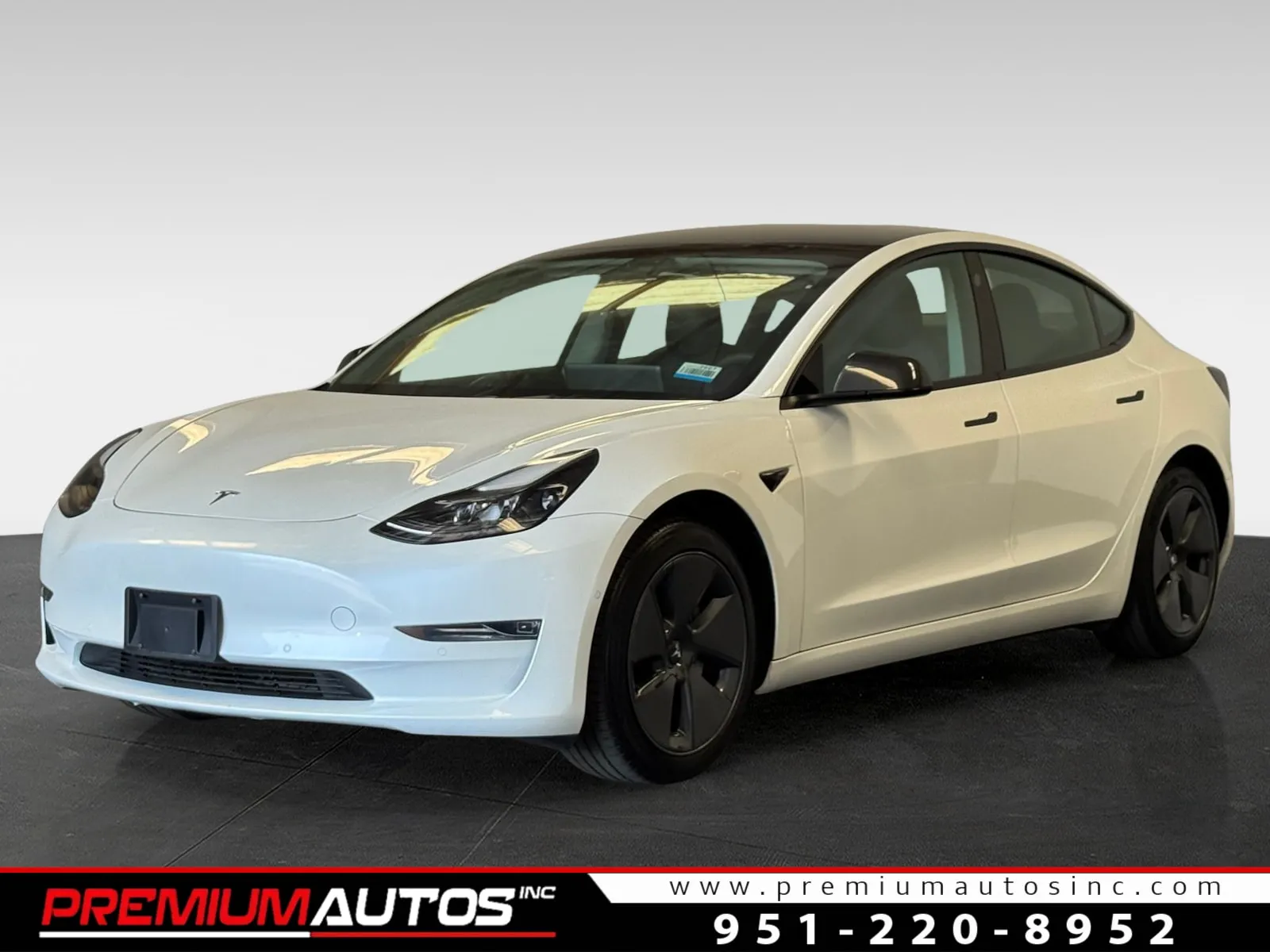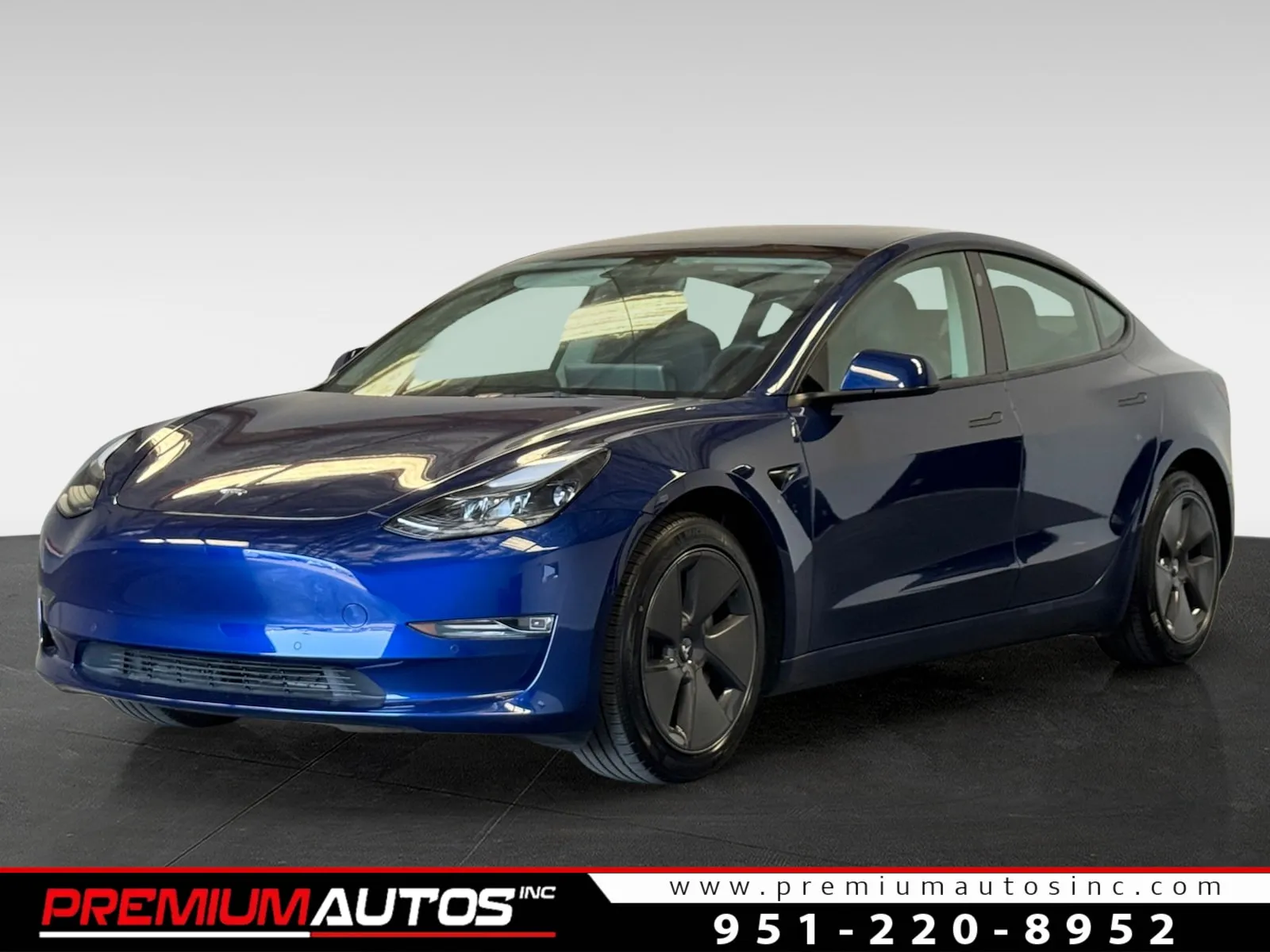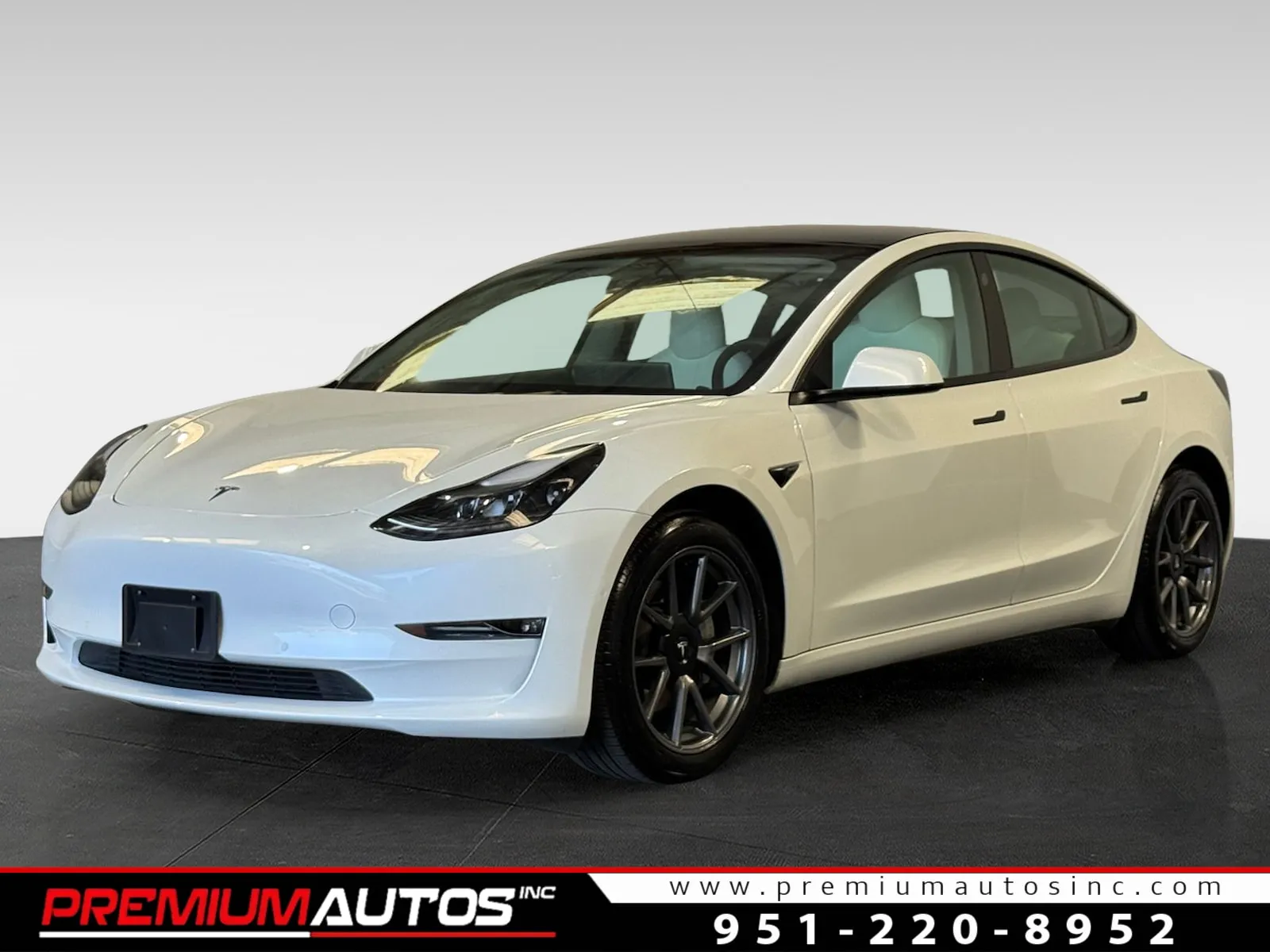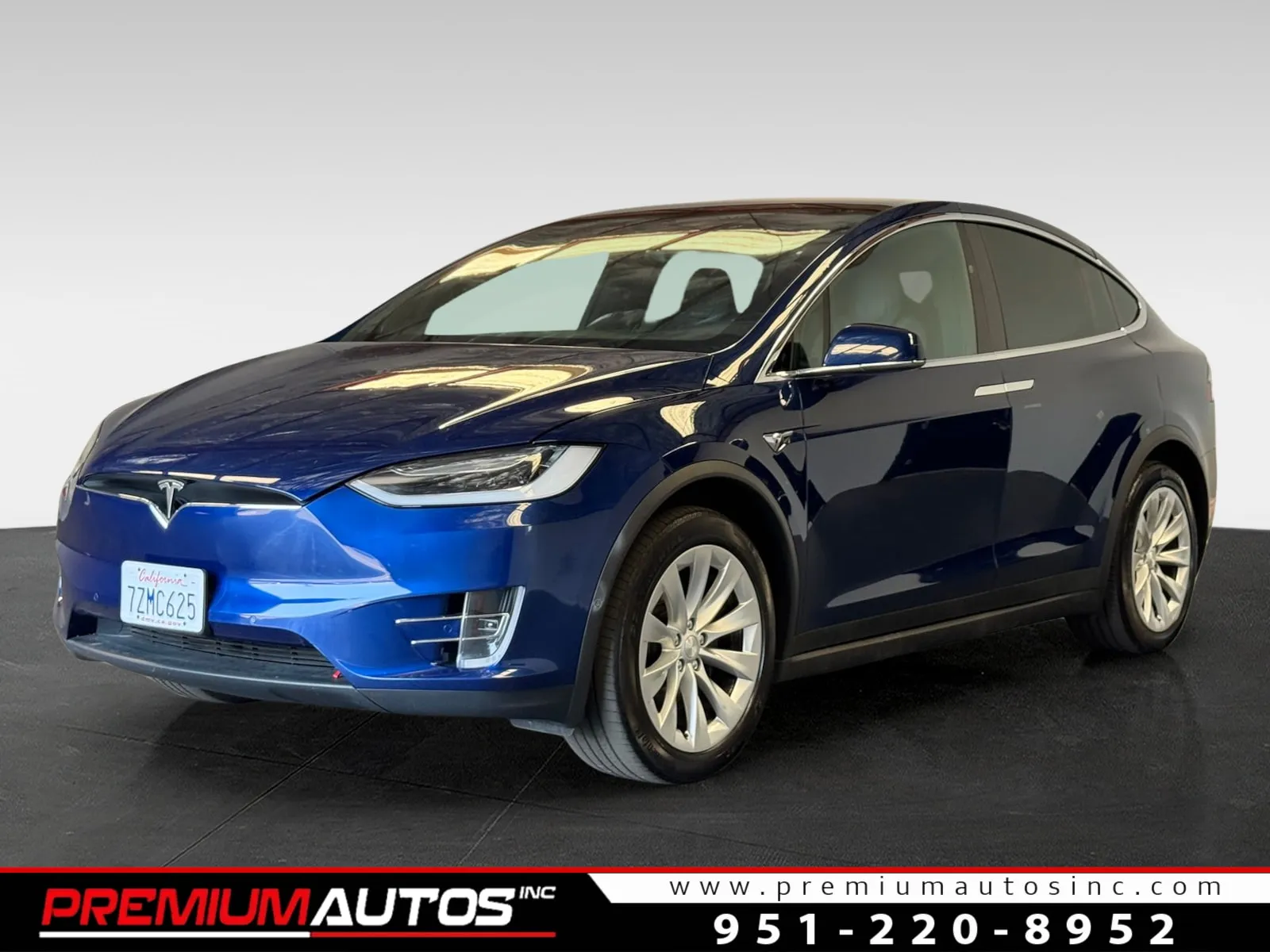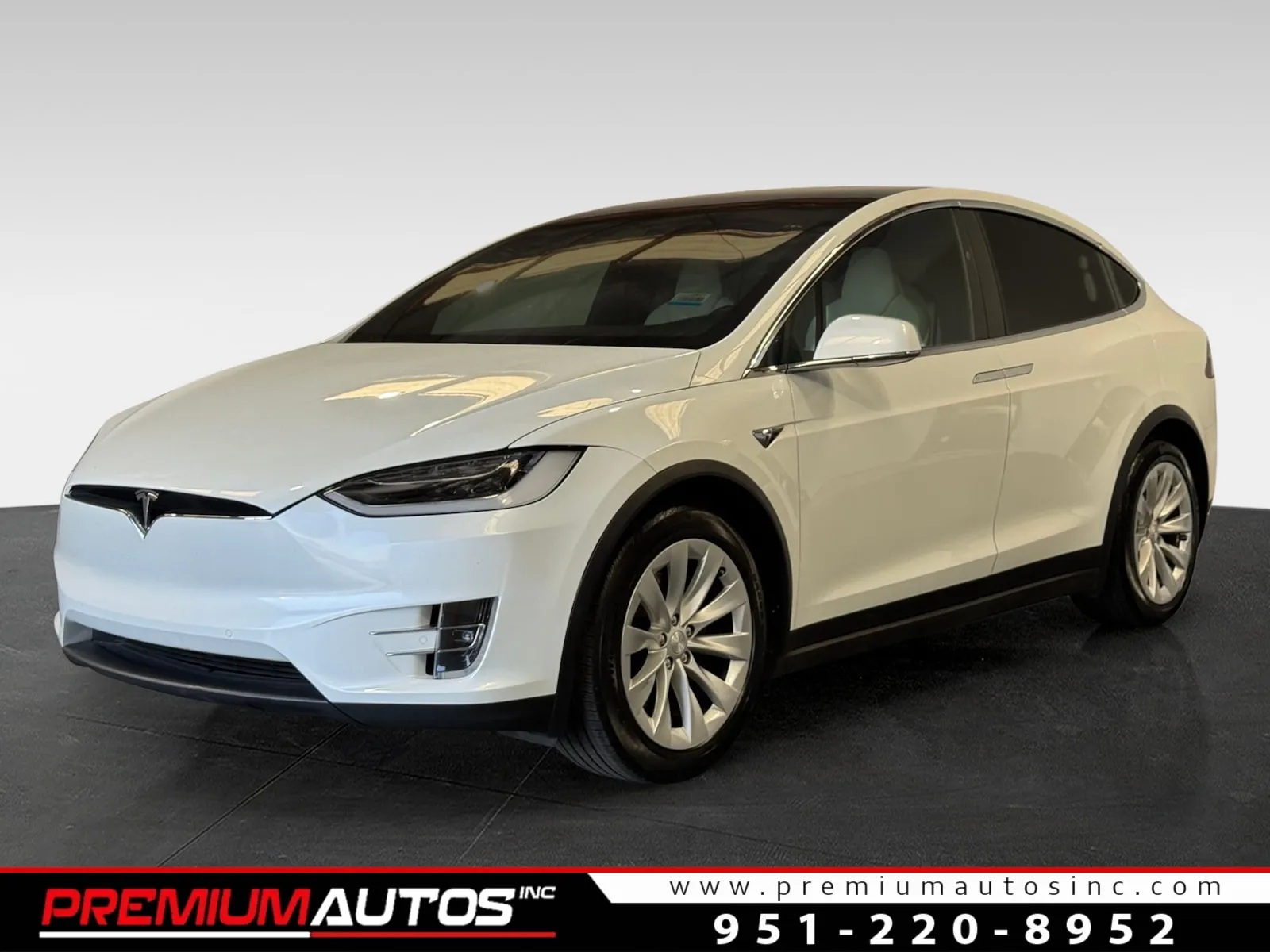Regional EV Charging Networks: Southern California Overview
Regional EV Charging Networks: Southern California Overview
Southern California is leading the charge in EV adoption, with 25.7% of new cars sold in California being Zero-Emission Vehicles (ZEVs) as of Q2 2024. The region is rapidly expanding its electric vehicle (EV) infrastructure to meet growing demand, with over 150,000 public and shared private chargers statewide as of August 2024. However, California will need 2.11 million chargers by 2035 to support the anticipated 15.2 million EVs on the road.
Key Highlights:
- EV Growth: 1,300 ZEVs sold daily in California in mid-2024.
- Charging Infrastructure: Over 24,000 new chargers installed in the first half of 2024.
- Major Players: Greenlane Infrastructure, Electrify America, and Rove Charging Centers are leading the expansion.
- Challenges: High installation costs for fast chargers ($122,000–$440,000) and grid integration hurdles.
- Future Tech: Megawatt Charging Systems (MCS) and battery swapping are emerging solutions for heavy-duty fleets and local delivery vehicles.
Southern California’s highways (e.g., I-10, I-15) and ports (Los Angeles, Long Beach) are at the forefront of this transformation, with significant investments in fast-charging hubs and advanced technologies. These developments are critical as California aims for 100% ZEV sales by 2035 and a cleaner transportation future.
BIG EV Truck Charging Station opens with 41 chargers! Greenlane Grand Opening!
Major Public EV Charging Networks in Southern California
Southern California is home to several major EV charging networks catering to both commercial fleets and individual drivers. These networks are designed to address the growing demand for electric vehicle infrastructure in the region, offering a range of services tailored to specific needs.
Greenlane Infrastructure
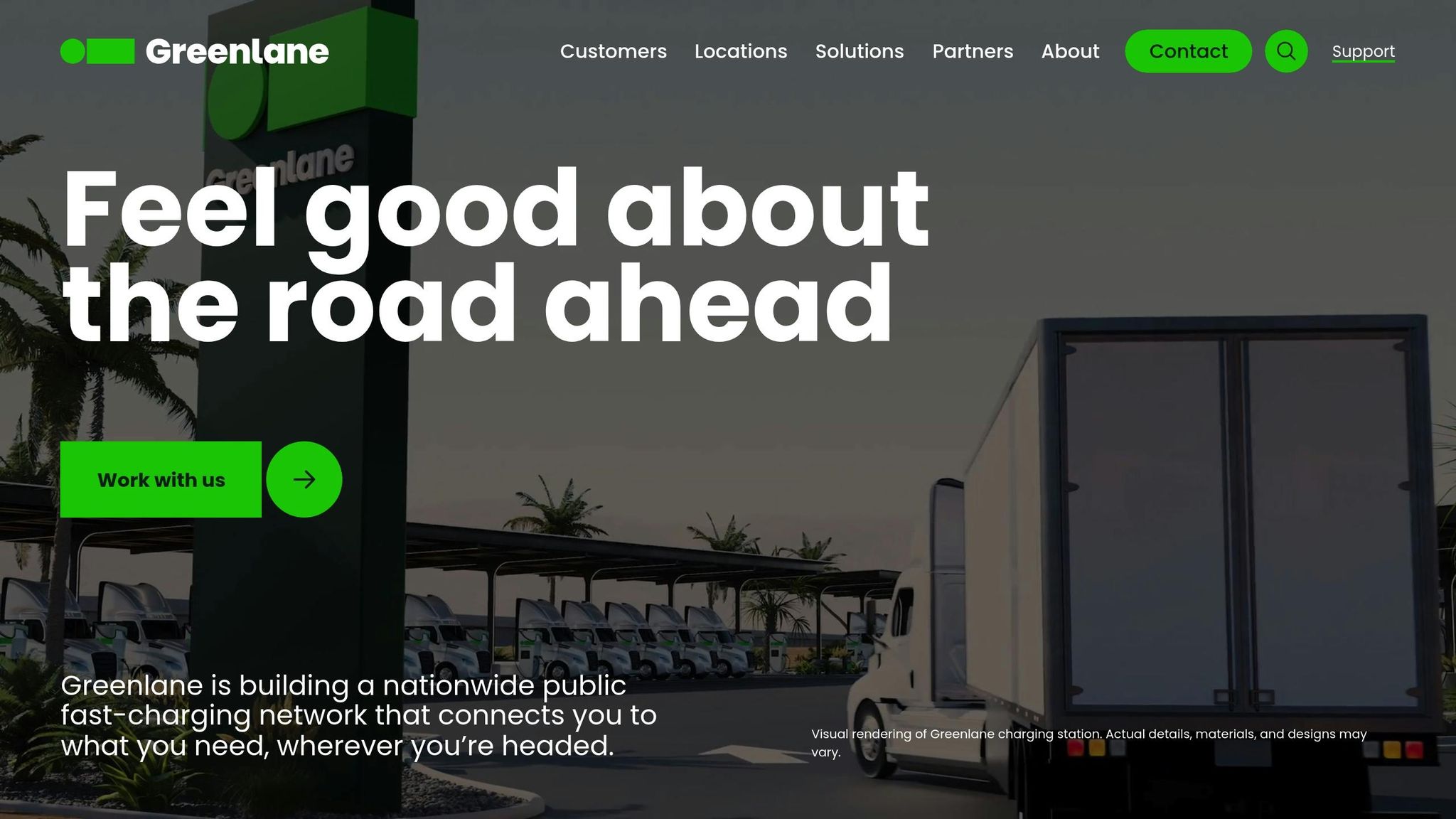
In April 2025, Greenlane Infrastructure unveiled its flagship charging hub in Colton, California. This facility features 41 chargers, including 12 pull-through CCS 400 kW dual-port units and 29 bobtail CCS 180 kW units, with a total capacity exceeding 10 MW. The project was part of a $650 million joint venture, supported by a $15 million grant, and aims to facilitate rapid fleet expansion.
Nevoya, Greenlane's first commercial fleet customer, plans to scale its fleet to 100 electric trucks using this network. Sami Khan, Nevoya’s co-founder and CEO, described the partnership:
"At Nevoya, we're committed to driving maximal efficiency and ease for our fleet and drivers, making Greenlane a natural partner as they lead the way for a national network of ZEV fleet refueling infrastructure".
Greenlane is also working to expand its network, with plans to establish charging sites every 60 to 90 miles along the I-15 corridor. Future locations are expected in Long Beach, Barstow, and Baker, California.
Electrify America
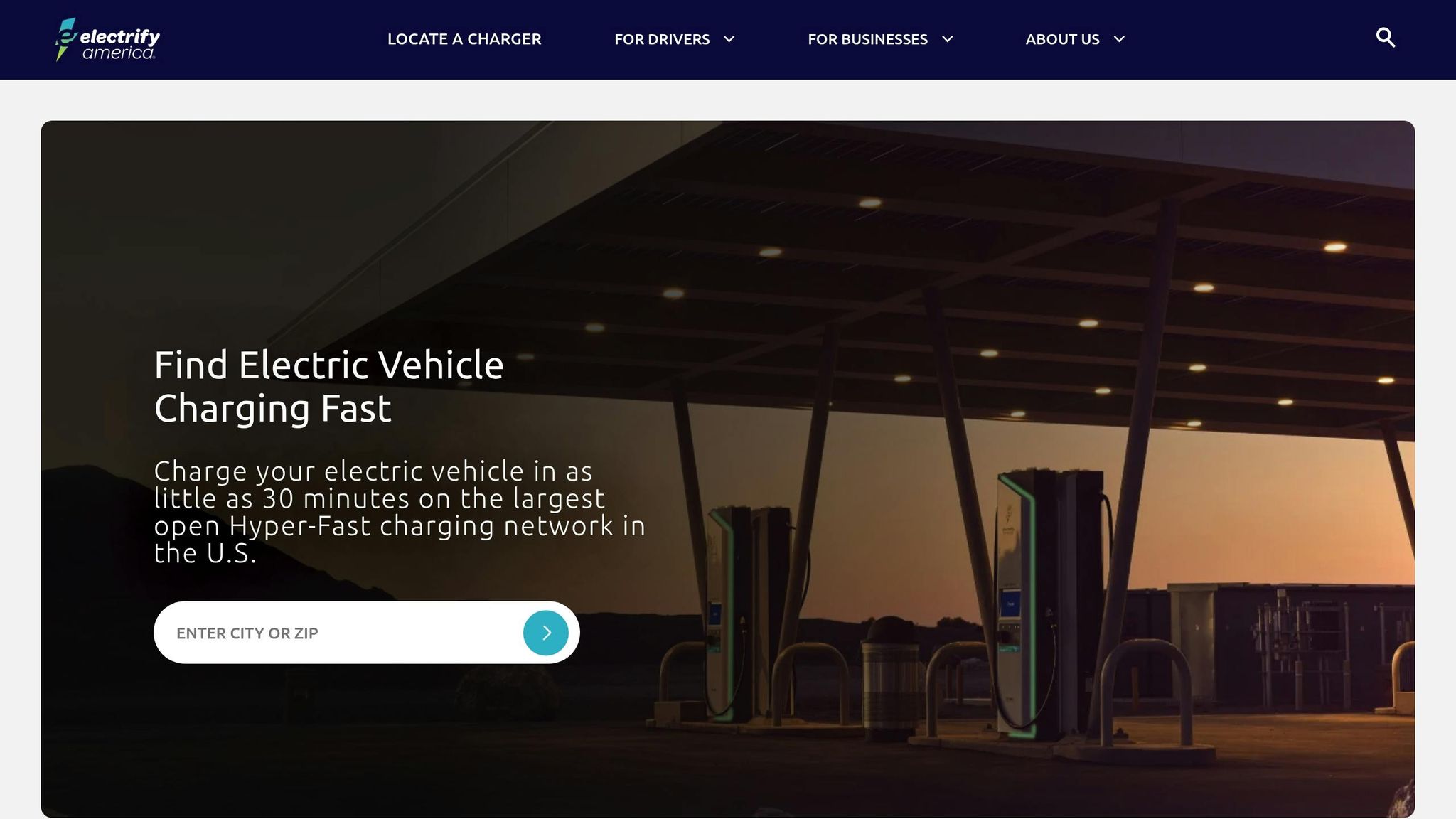
Electrify America operates over 4,400 chargers across 1,000 stations, strategically positioned along major highways like I-5 and I-10. These stations provide fast and reliable charging solutions for both fleets and individual drivers.
Rove Charging Centers
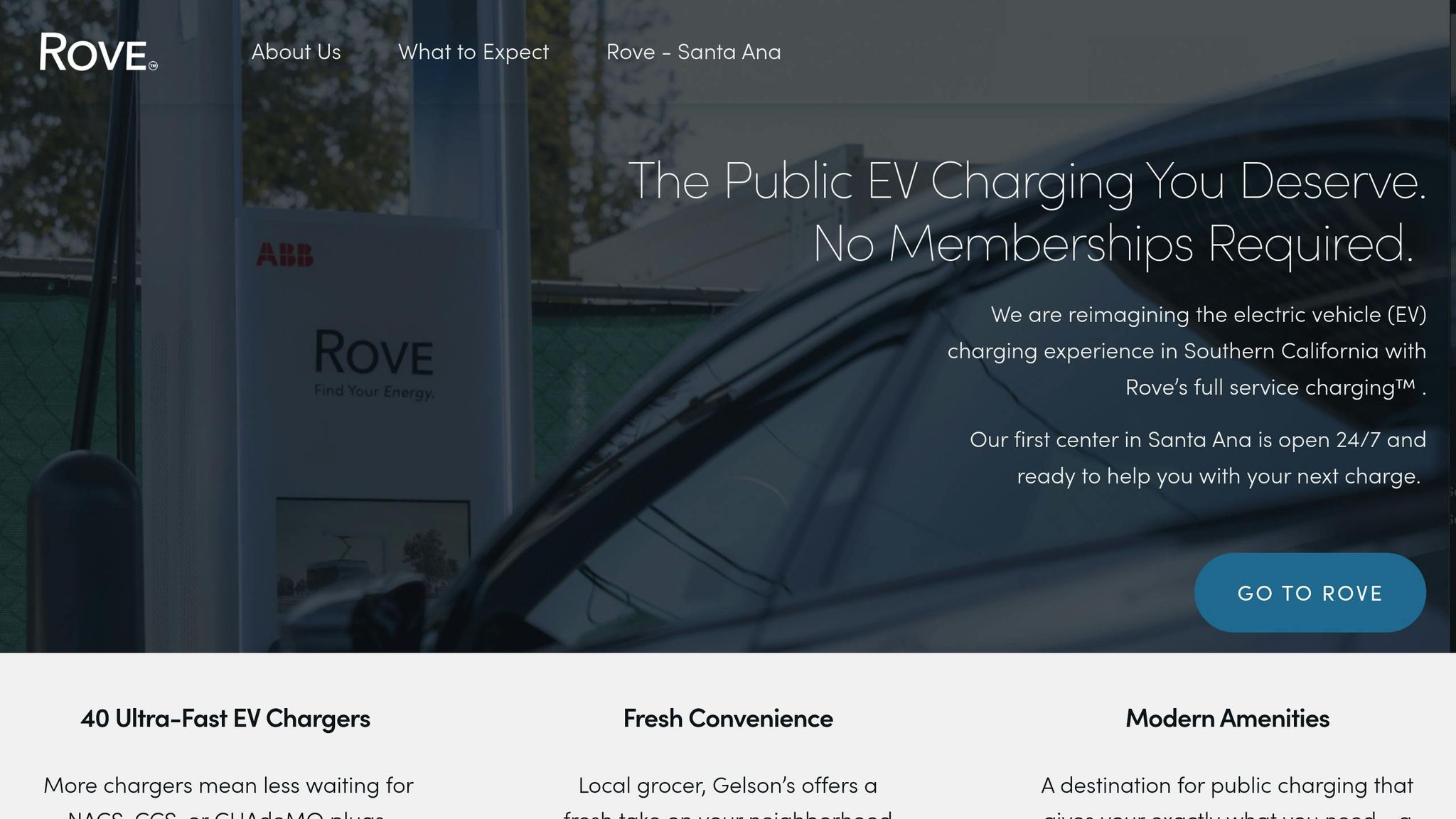
Rove opened its Santa Ana facility in October 2024, featuring 40 DC fast-charging stalls. These include 28 Tesla Superchargers and 12 ABB units compatible with NACS, CCS1, and CHAdeMO connectors. This center can charge more than 1,000 EVs daily, with rates set at $0.48 per kWh for CCS and CHAdeMO chargers, while Tesla Supercharger pricing is available via the Tesla app.
The Santa Ana location goes beyond charging, offering a ReCharge by Gelson's Fresh Market lounge equipped with 24/7 Wi-Fi, restrooms, and on-site security. Bill Reid, Rove's Chairman and CEO, emphasized their customer-focused approach:
"Our team set out to create more than just a charging station. We designed a community destination, a place where our customers would feel at ease and supported".
Rove plans to open 10 additional centers across Southern California by 2026, aiming to provide a premium charging experience tailored to the needs of local businesses and drivers.
These networks collectively address different aspects of Southern California's EV market. From Greenlane’s focus on heavy-duty fleets and Electrify America’s highway coverage to Rove’s premium, full-service approach, the region is well-positioned to support the ongoing shift to electric vehicles.
Technical Aspects of EV Charging in Commercial Zones
Southern California's industrial and commercial areas require high-capacity EV charging solutions to support fleets and frequent use.
Charger Types and Power Output
In the commercial EV charging market, two main connector standards dominate: NACS (North American Charging Standard) and CCS (Combined Charging System). Tesla's fast-charging network highlights NACS's growing popularity, with an impressive 17,740 fast-charging ports in the U.S., representing 62% of the country’s DC fast-charging ports. As AMP explains, "NACS is North America's most proven and widely used charging standard".
Here’s how NACS and CCS compare on key technical features:
| Feature | NACS | CCS |
|---|---|---|
| Connector | Compact design using AC pins | Larger with separate AC and DC inlets |
| Max Power | 350 kW | 500 kW |
| Compatibility | Tesla vehicles, adapted CCS vehicles | Most non-Tesla EVs in North America |
| Standards Body | SAE International (SAE J3400) | CharIN |
NACS chargers typically deliver up to 350 kW, while CCS1 chargers can technically handle up to 500 kW, offering 500 amps and 1,000 volts DC. However, real-world conditions often limit these outputs due to grid constraints and the high costs of scaling. For instance, charging 50 heavy-duty EVs simultaneously could push peak demand to 3.5 MW, compared to 1.5 MW for the same number of passenger EVs.
These technical details directly influence the challenges of integrating chargers into the power grid.
Grid Integration Challenges
Installing high-power chargers in commercial zones often requires significant grid upgrades, which can increase peak energy costs by more than 50%. This is especially critical in areas where uninterrupted operations are essential.
Pacific Gas & Electric (PG&E) has pioneered solutions to address these challenges. Using its Flexible Service Connection program, PG&E has connected Tesla Supercharger stations in Santa Nella and Upper Lake, CA, to its grid and Distributed Energy Resource Management System (DERMS). This system adjusts power delivery based on day-ahead availability, ensuring chargers can operate without waiting for extensive infrastructure upgrades. Mike Delaney, PG&E’s VP of utility partnerships and innovation, stated, "Our new Flexible Service Connection offering delivers individualized solutions that best meet customers' near-term needs, allowing them to connect without waiting for a physical infrastructure upgrade".
A practical example comes from PepsiCo’s bottling facility in Fresno, CA. By participating in PG&E’s Flex Connect program, the facility scaled its charging capacity for electric semi-trucks from 30 to 50 vehicles. The site now receives up to 4.5 MW of power, enabling daytime charging and accelerating capacity expansion by 18 months.
Battery Energy Storage Systems (BESS) are also playing a critical role in stabilizing the grid and reducing energy costs. These systems allow for more charging stations to be added without the need for costly grid upgrades.
Smart energy management is essential as California moves toward its goal of having 7 million EVs on the road by 2030. Load management strategies, such as offering incentives to reduce charging during peak hours and implementing automated control systems, help balance grid demand. For instance, Southern California Edison has proposed a tariff of 58 cents per kilowatt-hour for charging between 6 p.m. and 9 p.m. during summer months to encourage off-peak charging.
The California Public Utilities Commission (CPUC) is actively working to speed up grid connections for EV chargers. Utilities are also testing new technologies like bidirectional chargers and vehicle-to-grid (V2G) programs, which could create a more resilient and adaptable charging infrastructure.
Key EV Corridor Developments in Southern California
Southern California is making major strides in integrating EV charging stations into its freight and commuter hubs. With its highways serving as critical arteries for transportation, the region is transforming its infrastructure to meet the demands of both personal and commercial electric vehicles.
I-10 and I-15 Corridor Expansions
The I-15 corridor is at the forefront of this transformation, thanks to Greenlane Infrastructure's efforts to expand commercial EV charging. In March 2024, Greenlane unveiled its first commercial EV charging corridor along Interstate 15, addressing the growing need for public charging options for commercial vehicles. A key milestone in this initiative was the opening of the flagship Colton site in April 2025. Positioned at the intersection of Interstates 10 and 215, this hub offers over 60 chargers for heavy-, medium-, and light-duty zero-emission vehicles. Its location is strategic, as the I-10/I-15 interchange is ranked as the 10th most congested truck bottleneck in the U.S..
"The launch of this corridor not only marks a critical step in addressing the urgent need for publicly available, nationwide electric charging for commercial vehicles but will also serve as a model for the EV charging hubs of the future." – Patrick Macdonald-King, CEO of Greenlane
Greenlane has ambitious plans to add more sites every 60 to 90 miles along I-15, with future locations in Long Beach, Barstow, and Baker. These developments are already drawing interest from commercial operators. In May 2025, Nevoya, a zero-emissions electric trucking company, began running a fleet from the Colton site, with plans to grow to 100 trucks. Supporting this expansion, the California Energy Commission is investing $55 million to install fast-charging stations at businesses and public locations. This is part of California's broader goal to deploy 1 million public chargers by 2030 and achieve 100% zero-emission vehicle sales by 2035. Together, these efforts are reshaping transportation in Southern California.
Port of Long Beach and Los Angeles Initiatives

Beyond highways, Southern California's ports are also leading the charge in EV infrastructure. The ports of Los Angeles and Long Beach are investing heavily in electrifying freight operations, introducing cutting-edge charging solutions. In January 2025, Forum Mobility launched FM Harbor, an advanced electric truck charging depot at the Port of Long Beach. This facility boasts 44 fast-charging stations and 9 MW of power, capable of supporting over 200 electric drayage trucks daily.
"FM Harbor is a state-of-the-art facility designed to support California's ambitious transition to zero-emission transportation. With 9 MW of power, 44 fast-charging stations, and the capacity to charge over 200 trucks per day, this project substantially boosts drayage operations and sustainable transportation." – Laura Renger, Executive Director of the California Electric Transportation Coalition
The ports have committed $25 million from their Clean Truck Funds to support projects totaling $135 million, which will install up to 207 charging units across eight sites in Southern California. Additionally, the Port of Long Beach is advancing wireless charging technology, planning to install five wireless charging pads for electric yard tractors using InductEV's technology. This system achieves 90% power transfer efficiency without requiring physical plugs. Forum Mobility's depot also includes 19 dual-port chargers and six single-dispenser chargers, allowing 44 heavy-duty trucks to charge simultaneously in about 90 minutes, depending on their battery capacities.
As of early 2024, the Clean Truck Fund Rate had generated nearly $153 million combined - $78 million from the Port of Los Angeles and $75 million from the Port of Long Beach - highlighting the financial momentum behind these initiatives.
These advancements in highway and port infrastructure are propelling California toward a cleaner transportation future. By 2024, the state already had 178,500 EV charging ports, surpassing the estimated 120,000 gas nozzles nationwide - a clear indicator of the shift toward electrification.
sbb-itb-66f4901
Future Trends and New Technologies in EV Charging
Southern California's EV charging infrastructure is evolving rapidly, driven by the region's growing EV corridors and grid advancements. These developments are tailored to meet local challenges, such as heavy freight traffic and grid capacity issues, while propelling California toward its ambitious zero-emission goals.
Megawatt Charging Systems (MCS)
Megawatt Charging Systems (MCS) are a game-changer for heavy-duty EV fleets, delivering up to 3.75 MW of power at 1,250 volts and 3,000 amperes. This level of power can charge a 1,000 kWh battery in just 20–30 minutes, a significant improvement over the hours traditional chargers require.
"Megawatt technology is the first step toward electrifying the commercial trucking industry. This infrastructure will enable electric trucks to achieve distances comparable to those covered by internal combustion vehicles." - Hossein Kazemi, CTO for Hardware at ChargePoint
Southern California is already seeing MCS in action. WattEV launched a charging hub in Bakersfield in May 2024, equipped with three MCS chargers capable of delivering up to 1.2 megawatts of power. This hub also features 32 DC fast-charging ports and integrates renewable energy to reduce dependency on the grid.
Greenlane Infrastructure is also preparing for the future along the I-15 corridor, designing systems that can handle over 1,000 kW with scalable MCS upgrades. These systems require robust infrastructure, including high-power transformers (1-3 MVA) and advanced cooling systems, but their scalability makes them a long-term solution for expanding EV fleets.
Near the Ports of Los Angeles and Long Beach, Prologis and Performance Team – A Maersk Company have built Southern California's largest heavy-duty EV charging depot. With a 9 MW capacity, it can charge up to 96 heavy-duty trucks simultaneously. This facility also features a microgrid developed by Mainspring Energy, allowing it to operate independently from the local grid.
"It is our ambition to drive the industry shift toward decarbonized supply chains. This facility strengthens our ability to offer customers a decarbonized alternative to conventional trucking and brings us closer to our goal of reaching net zero by 2040." - Charles van der Steene, Regional President for Maersk North America
While MCS is ideal for long-haul trucking, another technology - battery swapping - offers a fast and efficient solution for local fleets.
Battery Swap Stations
Battery swapping technology provides a quick alternative to traditional charging, completing a battery replacement in under five minutes. This speed is particularly appealing for commercial fleets and high-mileage drivers where downtime is costly.
This approach also lowers the initial cost of EV ownership. Fleet operators can lease batteries separately, reducing upfront expenses while extending battery life by up to 50% compared to fixed systems. Additionally, battery swapping can help stabilize the grid by allowing batteries to charge during off-peak hours, when electricity rates are lower and demand is reduced.
From a cost perspective, battery swapping is competitive. While public EV charging typically costs $10–$30 per session, battery swaps are priced between $11 and $14. The technology is gaining traction globally, with companies like Nio, Gogoro, and Ample leading the way. For example, Taiwan's Gogoro operates over 12,000 stations across Asia, completing approximately 400,000 swaps daily - a testament to the scalability of this model.
"The continuous advancement of battery swapping technology and the promotion of standardisation will provide a more solid foundation for the electrification transformation in the market. As the technology matures and is applied on a larger scale, the user experience of electric vehicles will be further enhanced." - Bo Yu, Country Manager for JATO China
In Southern California, battery swapping could be especially valuable in logistics hubs like Ontario and Riverside, where warehouses and distribution centers rely on vehicles with minimal downtime. By centralizing battery maintenance and ensuring rapid turnarounds, this technology offers a practical solution for high-demand operations.
Together, MCS and battery swapping technologies address complementary needs in Southern California's EV landscape. MCS supports long-haul trucking along major corridors like I-10 and I-15, while battery swapping ensures quick turnaround times for local delivery and distribution fleets. These advancements are helping position Southern California as a leader in next-generation EV infrastructure, paving the way for a zero-emission future.
Conclusion: Moving Toward a Cleaner Transportation Future
Southern California's growing network of EV charging stations is paving the way for a cleaner, more sustainable transportation landscape. Considering that California's transportation sector is responsible for roughly 50% of the state's greenhouse gas emissions, nearly 80% of nitrogen oxide pollution, and 90% of diesel particulate matter pollution, the stakes for both environmental health and public well-being are incredibly high.
The benefits of EV infrastructure go beyond environmental impact. For example, in 2019, businesses located within 350 feet of charging stations reported spending increases of up to 3.2%, highlighting how this infrastructure can also boost local economies. On the environmental side, California's decarbonization efforts are expected to save 1 billion tons of CO₂ in the light-duty vehicle sector, with an additional 100 million tons of CO₂ reductions coming from grid improvements. As David Hochschild, Chairman of the California Energy Commission (CEC), stated:
"The California EV driver experience is getting better by the day. The state will continue to heavily invest in EV infrastructure, with particular emphasis in hard-to-reach areas, making these vehicles an easy choice for new car buyers."
The momentum for EV adoption is undeniable. By 2024, global electric car sales had surpassed 17 million, and in 2025, the market experienced a 35% quarterly growth. California now even has more EV charging ports than traditional gas nozzles as of March 2025 .
For Southern California residents ready to embrace this shift, Premium Autos Inc is a trusted resource for electric vehicles. Offering a curated selection of EVs from brands like Tesla, BMW, and Toyota, their locations in Norco and El Monte provide services such as trade-ins, financing, and detailed guidance on available EV rebates. Every vehicle undergoes thorough inspections to ensure top quality, making the transition to electric driving both accessible and reliable.
From advanced charging systems to statewide corridor expansions, every step forward brings Southern California closer to a transformative future. With economic incentives, robust infrastructure, and a pressing environmental need, the region is leading the charge in clean transportation. As Rob de Jong, Head of the Sustainable Mobility Unit at UNEP, aptly puts it:
"Electric vehicles are winning. The train has left the station. There might be some question about how fast it will go. But it's not coming back."
Southern California's transportation future is electric, and the groundwork to support this shift is already firmly in place.
FAQs
What challenges does Southern California face in expanding EV charging stations, and what steps are being taken to solve them?
Challenges in Expanding EV Charging Infrastructure in Southern California
Southern California is grappling with several hurdles as it works to expand its EV charging network. Among the biggest challenges are delays in connecting new charging stations to the electrical grid and the often time-consuming permitting processes, both of which can significantly slow down progress. On top of that, outdated local planning codes can make it harder to designate specific sites for EV charging stations, creating additional roadblocks.
To tackle these issues, California has committed substantial resources to improving its charging infrastructure. The state has earmarked $2.9 billion to build 80,000 charging stations, focusing on underserved areas, including low-income and disadvantaged communities. Alongside this financial investment, efforts are being made to simplify permitting procedures and standardize infrastructure requirements. By cutting red tape and reducing costs, these measures aim to speed up installations and make the EV charging network more accessible and dependable throughout the region.
How do Megawatt Charging Systems (MCS) and battery swapping technologies improve the efficiency of EV fleets in Southern California?
Megawatt Charging Systems (MCS) and Battery Swapping Technologies
Megawatt Charging Systems (MCS) and battery swapping technologies are making a huge difference in improving the performance and reliability of electric vehicle (EV) fleets in Southern California.
MCS systems are designed for ultra-fast charging, delivering up to 3.75 megawatts of power. This means heavy-duty electric trucks can recharge in a fraction of the time it would typically take, keeping downtime to a minimum. For industries like logistics and freight, where every minute counts, this capability is a game-changer.
On the other hand, battery swapping technology takes convenience and efficiency to another level. Instead of waiting for a battery to charge, EVs can simply exchange their depleted batteries for fully charged ones in just a few minutes. This not only eliminates long charging waits but also increases the range of vehicles without requiring a dense charging network. It's especially valuable in crowded urban areas where space is at a premium. Plus, it helps maintain battery health by allowing batteries to recharge during off-peak hours, which can ultimately extend their lifespan.
How do Southern California's ports and highways impact the growth of the region's EV charging network?
Southern California's extensive network of highways and its bustling ports, like the Port of Los Angeles and the Port of Long Beach, play a central role in shaping the region's electric vehicle (EV) charging landscape. These hubs are vital for transportation and logistics, making them high-traffic zones where the need for accessible EV charging stations is especially evident. This is particularly true in industrial and commercial areas, where fleet vehicles and long-distance travelers are constantly on the move.
Focusing on expanding EV charging infrastructure along these key corridors not only encourages the shift to electric vehicles but also helps tackle air pollution by cutting emissions in some of the nation’s busiest transit areas.




